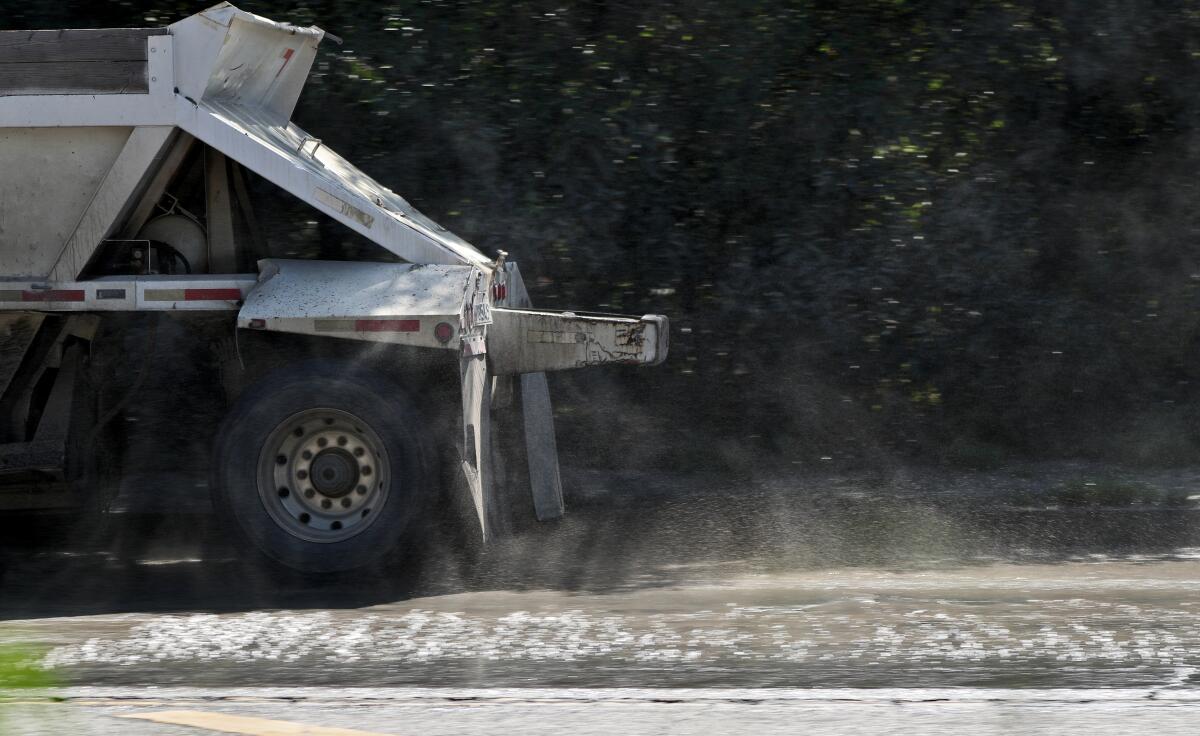County, CARB to measure tailpipe emissions from Devil’s Gate haulers

- Share via
A plan to track and measure pollutants coming directly from diesel trucks hauling sediment from behind Devil’s Gate Dam will move forward after Los Angeles County Supervisor Kathryn Barger recently called on Public Works officials to establish a tailpipe emissions program.
In a release issued Friday by the supervisor’s office, Barger explained the department would confer with the California Air Resources Board (CARB) on implementing a Phase II monitoring program and indicated the two parties had already reached an agreement.
Barger, who represents the 5th District, including La Cañada Flintridge and Pasadena, proposed in April the county use Flood Control District funds to install and maintain air quality monitors around the dig site and at nearby La Cañada High School.
County officials have since released reports from the monitoring stations to the public on an ongoing basis. But some La Cañada Flintridge officials and citizens, including Mayor Pro Tem Greg Brown, have called on the department to measure emissions coming directly from the tailpipes of the vehicles themselves.
Elizabeth Krider, an LCHS parent who helped form the community-led advocacy group LCF 4 Healthy Air, described in an Aug. 6 City Council study session why measuring emissions directly from diesel trucks is more effective than monitoring variances in air quality around the site.
She likened it to measuring the temperature of a turkey cooking in an oven.
“You don’t pull it out, let it cool and then measure the temperature and see has it met the threshold temperature safe for consumption — it’s measured where it’s being cooked,” Krider said. “Any type of tailpipe verification cannot be far from the source.”
Details about how and when Phase II tests are to be conducted will be discussed in an upcoming meeting with community stakeholders, CARB representatives and the University of California, Riverside Center for Environmental Research and Technology.
Any truck found not to meet 2010 emissions benchmark established for the project will be taken off the job for repair or replacement.
Barger said a second level of monitoring would help ensure trucks exiting the hauling site complied with the project’s “stringent standards.”
“Vital emissions data will be collected and corrective actions will be taken,” she said in the release. “I want to ensure that community concerns are fully addressed and that every possible safeguard is in place to protect public safety and the environment.”
Support our coverage by becoming a digital subscriber.
